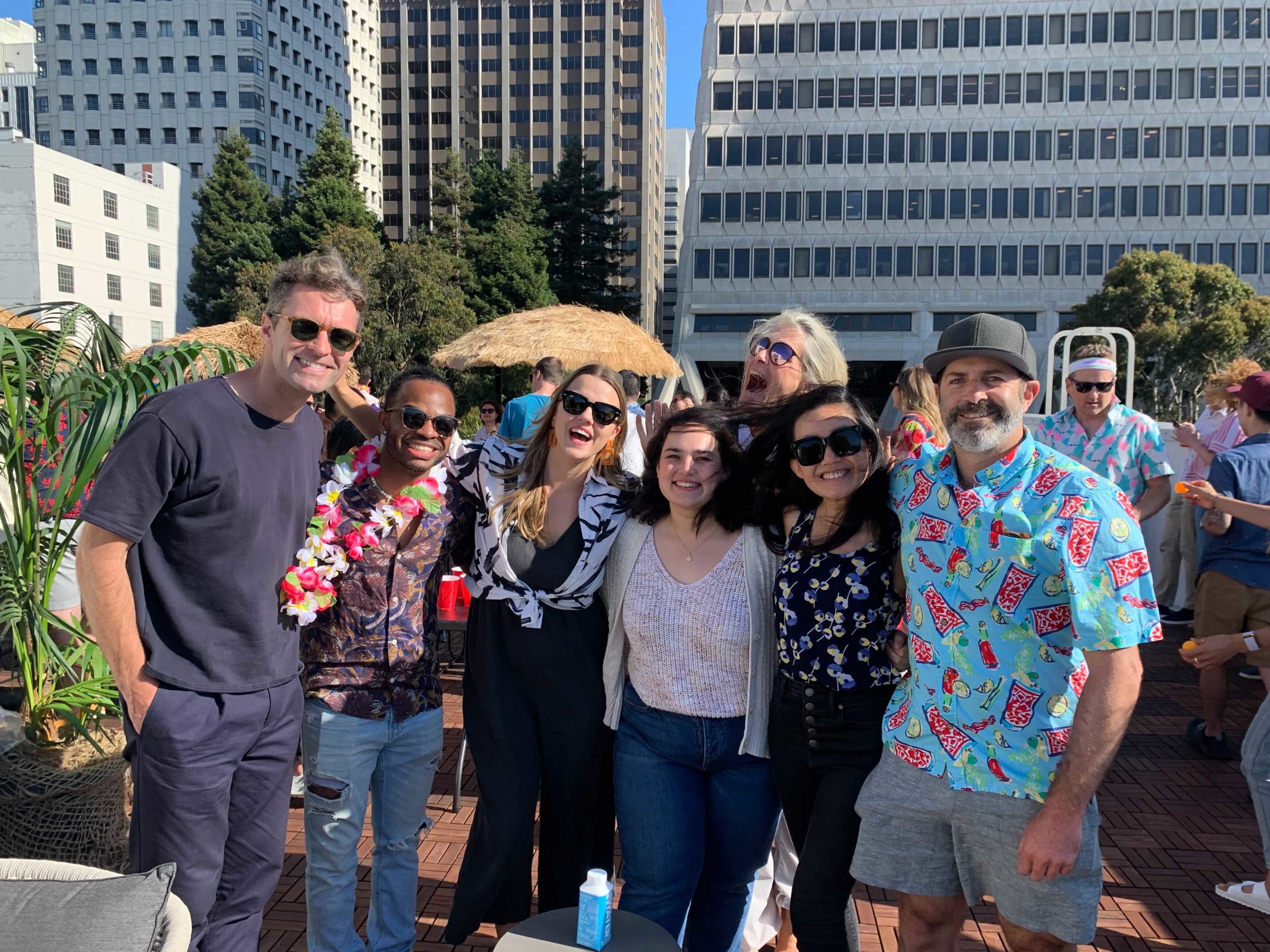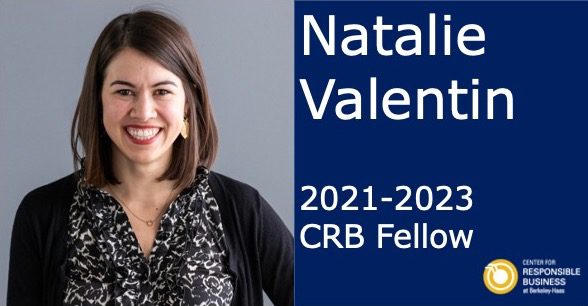Sustainable Open Innovation is Guiding Carlsberg to a Biodegradable Beer Bottle Breakthrough
Written by Alison Gilbert, CRB Student Advisory Board Member and MBA ’20
Danish beer manufacturer Carlsberg is currently prototyping the world’s first ‘paper’ beer bottle. It’s made from sustainably-sourced wood fibers and is both 100% bio-based and fully recyclable. And Carlsberg is using sustainable open innovation to do it.
Professors Marcel Bogers from the University of Copenhagen, and Henry Chesbrough and Robert Strand of UC Berkeley, introduced the concept of sustainable open innovation in their recent paper, “Sustainable Open Innovation to Address a Grand Challenge: Lessons from Carlsberg and the Green Fiber Bottle.” I met with Professor Chesbrough, who leads the Garwood Center for Corporate Innovation and first coined the term “open innovation,” and Professor Strand, who leads the Center for Responsible Business and is an expert on sustainability in the Nordic countries, to understand more about how this approach to innovation is key to breakthroughs such as Carlsberg’s new bio-based beer bottle.

Core to Carlsberg’s journey was its motivating desire to improve its sustainability performance. When it calculated its environmental impact, it found a whopping 40% of its footprint came from packaging, not from the brewing itself. But Carlsberg didn’t want to get into the packaging business. Its leaders wondered, “How are we going to improve this if we’re not going to do it ourselves?” Framing the challenge that way put them right at the heart of open innovation.
And that meant collaboration.
Sustainable open innovation is a distributed innovation process that occurs across organizational boundaries, and which contributes to development that meets the needs of the present without compromising the ability of future generations to meet their own needs.
For Carlsberg, this environmentally-friendly model began as a collaboration with ecoXpac, a small Danish company focused on biodegradable packaging solutions. They were joined by the Technical University of Denmark (DTU), who helped advance the research; a Swedish packaging company called BillerudKorsnäs, who brought additional capital and materials expertise; and the Innovation Fund Denmark (IFD), who provided government funding. Chesbrough highlighted that this open innovation approach was motivated by a shared sense of purpose that allowed a division of labor between the contributors. “Each brings its own knowledge and expertise, and each brings its own assets and infrastructure. DTU’s equipment, personnel, and supplies were already there and available for the project. It’s there to be hired! While you ‘pay’ for that, it’s not nearly the full cost of building it from scratch.”
Chesbrough underscored two elements at play here.
First, Carlsberg’s role was essential to reduce the risk for the companies developing this new packaging technologies. Carlsberg provided guidelines based on its specs and exactly what the designer must show the package can do. They said, “If you can do it, here’s a purchase order!” That PO was particularly important for ecoXpac. It enabled them to demonstrate to investors that there’s already a contract from a large-scale and well-respected brewery, thus removing a lot of economic risk.

Second, it was key to make this new packaging technology open and available for other companies to use. It’s good for the packaging developers and investors because it expands the market, leading to more sales and eventually more profit. It’s good for Carlsberg, because as economies of scale kick in, costs will decrease for them as customers of the packaging suppliers. And it’s good for other companies, who can then leverage these innovations in their own products—Coca Cola, Absolut, and L’Oreal have since come onboard as partners in this journey towards a paper bottle.
Strand emphasizes the brilliance of the collaborative Nordic mindset here. It provides more opportunity for investment on one hand, and can lower the costs on the other. This is a far better outcome than if Carlsberg had tried to create a more sustainable bottle itself. “How many other companies would want to buy packaging from Carlsberg? Probably very few!”
Open innovation shares the risk, accelerates the time to market, and reduces the direct out of pocket costs relative to doing it all yourself, Chesbrough explained. “The same amount of money gets more experiments and more shots on goal.”
This is a very different mindset than that of companies who see sustainability as a competitive edge. To be clear, I am personally happy about any company that is exploring sustainability, regardless of their underlying motivation. But it’s a helpful distinction: some companies take the purely financial, or pecuniary, view: using sustainability as a means to drive profit by attracting more green-minded consumers. Whereas for Carlsberg, the initial impetus seems to be more based in non-pecuniary sustainability-motivated desire. When they saw that 40% of their environmental footprint came from packaging, they decided, “We need to do something about that!” It wasn’t because consumers said, “You better change or I’ll buy another beer.” But while it’s not only about driving revenues, Strand has a hunch they will still receive additional financial benefit in the long run: their authentic commitment to environmentally-responsible practices will help attract and retain the best talent.
Carlsberg isn’t the only company who’s motivated to pursue sustainability for the sake of the planet—Patagonia is another example that is often highlighted. Carlsberg and Patagonia have another element working in their favor to allow them to take on sustainability endeavors that may not necessarily drive profits in the short-run: their organizational structures. Carlsberg is an industrial foundation, which means the Carlsberg Foundation has the majority voting rights in the company and can therefore hold the company accountable to the three Ps of profit, purpose, and planet. And Patagonia is a privately-owned company founded by Yvon Chouinard, an outdoorsman and self-proclaimed “reluctant businessman.” Large publicly-traded companies have different pressures, which necessarily means they have to prioritize quarterly profits for their shareholders. They therefore have less discretion in their ability to take a bet on something that likely won’t demonstrate an immediate financial benefit.

Another key element of this innovation was Carlsberg’s very public announcement of this work. In 2015 Professor Flemming Besenbacher, Chairman of the Carlsberg Foundation, revealed the first prototype of a fiber-based bottle in the most public way he could: at the World Economic Forum in Davos. The work was just getting going, and there were countless ways it could have failed. But this very public announcement meant Carlsberg was going to hold itself accountable, and the organization responded incredibly positively to this public and authentic commitment. If Carlsberg had instead taken a purely profit-oriented approach to sustainability, and then found it was not profitable, it could just quietly back off or launch another campaign to change the conversation to a different dimension.
Embracing sustainable open innovation like this requires confidence without attitude. Strand reflected, “It takes humility to say, ‘I don’t have all the answers, and there are lots of smart people out in the world so let’s work together.’ And it takes confidence to say, ‘We’re good enough and we will realize some value from this, even if not sure what yet!’” Unlike a mindset where you dominate, control, and own, Carlsberg and other Nordic companies tend to have a more nurturing culture. That humility and confidence enables them to collaborate, watch how the pieces play out, and see how they’ll extract value at some point in time, even if it’s not now. “It’s an interesting cocktail that enables more engagements and possibilities to realize these sorts of benefits.” And if this “cocktail” will mean a greener beer bottle, we’re all for it.
About the Author

Alison Gilbert, MBA ’20
Alison came to Haas with a background in marketing in the social sector. Passionate about innovation that benefits people and planet, she seeks to help companies adopt more responsible practices and consumers embed sustainability into their everyday habits and purchases.


